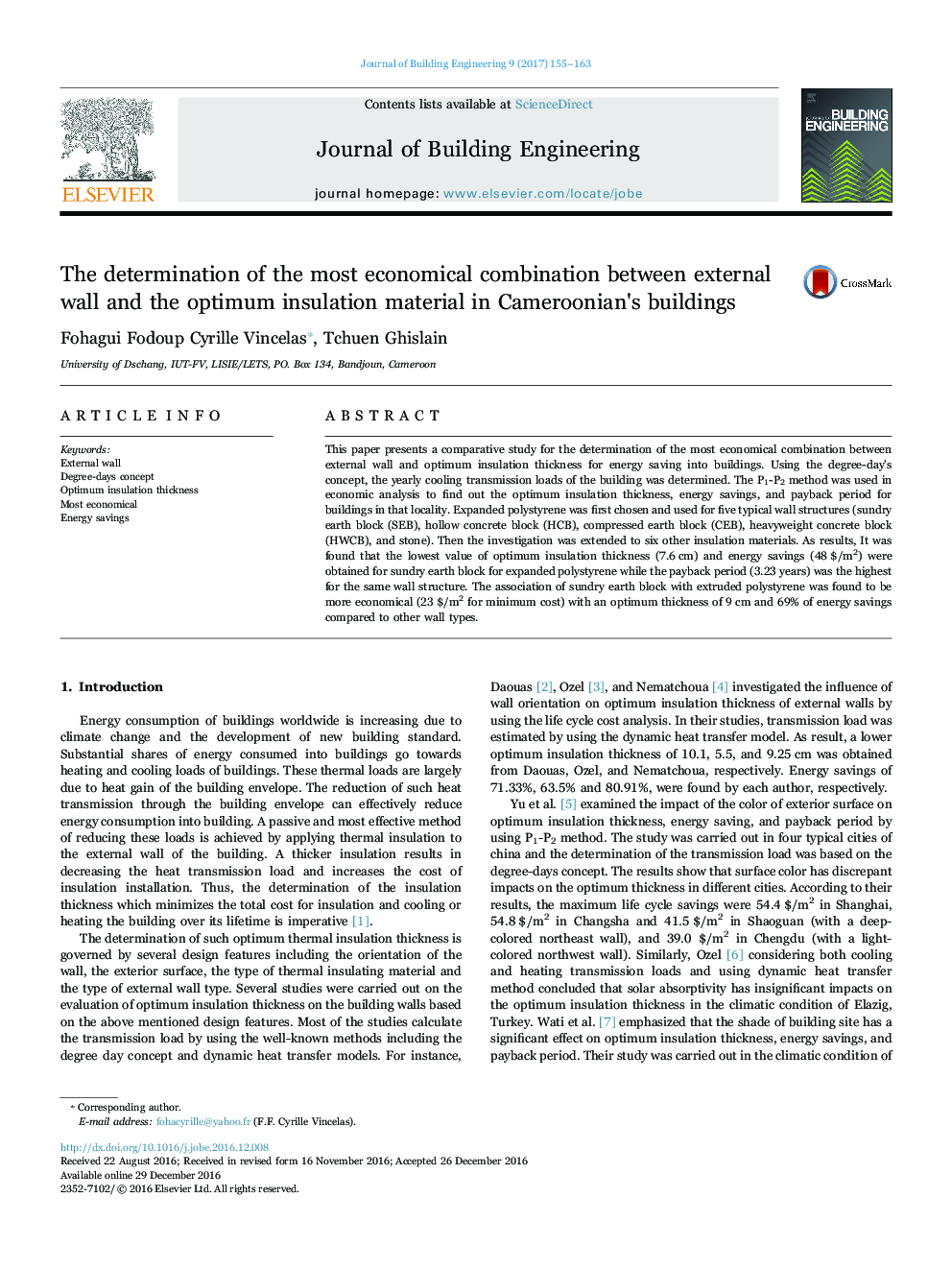| Article ID | Journal | Published Year | Pages | File Type |
|---|---|---|---|---|
| 4923193 | Journal of Building Engineering | 2017 | 9 Pages |
This paper presents a comparative study for the determination of the most economical combination between external wall and optimum insulation thickness for energy saving into buildings. Using the degree-day's concept, the yearly cooling transmission loads of the building was determined. The P1-P2 method was used in economic analysis to find out the optimum insulation thickness, energy savings, and payback period for buildings in that locality. Expanded polystyrene was first chosen and used for five typical wall structures (sundry earth block (SEB), hollow concrete block (HCB), compressed earth block (CEB), heavyweight concrete block (HWCB), and stone). Then the investigation was extended to six other insulation materials. As results, It was found that the lowest value of optimum insulation thickness (7.6Â cm) and energy savings (48Â $/m2) were obtained for sundry earth block for expanded polystyrene while the payback period (3.23 years) was the highest for the same wall structure. The association of sundry earth block with extruded polystyrene was found to be more economical (23Â $/m2 for minimum cost) with an optimum thickness of 9Â cm and 69% of energy savings compared to other wall types.
